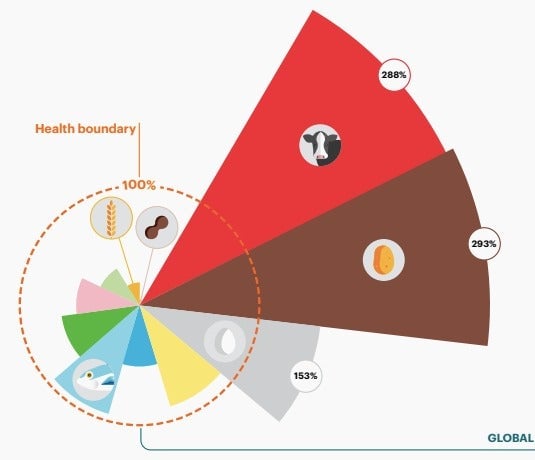One stark graphic shows how we need to shift our diets for the planet
As the United Nations hosts a Climate Action Summit today in New York, attention will inevitably turn to the topic of agriculture, and the growing environmental footprint of feeding the planet.


As the United Nations hosts a Climate Action Summit today in New York, attention will inevitably turn to the topic of agriculture, and the growing environmental footprint of feeding the planet.
The facts are pretty stark. The globe is going to have to feed close to 10 billion people by the middle of the century, with much of the increase fueled by population growth in China and India.
That’s a complicated prospect, though. More and more people in both countries are being lifted into the middle class. Historically, people with more disposable income tend to eat more meat and dairy. Both are products of animal agriculture which, of all agriculture, leads to the greatest greenhouse gas emissions.
With that it mind, scientists around the world have set out to tackle the complex task of showing how we should eat to be good stewards of the globe. The graphic below is from the EAT Lancet Report, published in early 2019. It shows, on a global scale, how humans currently eat versus how they should to sustain planetary health.

The research that went into the report and this subsequent graphic shows the globe is over-consuming animal-based products, while not getting enough whole grains, legumes, fruit, and vegetables.
The imbalance is important to keep in mind as the world’s biggest economies gather to discuss the single biggest threat to humanity. “Transformation to healthy diets by 2050 will require substantial dietary shifts,” the report says. “This includes a more than doubling in the consumption of healthy foods such as fruits, vegetables, legumes and nuts, and a greater than 50% reduction in global consumption of less healthy foods such as added sugars and red meat.”
Regions of the world vary in suggested dieting changes, laying bare disparities in wealth and, subsequently, access to certain foods. In comparatively wealthy North America, for instance, the report advocates a massive reduction in red meat, dairy, and starchy vegetables. In sub-Saharan Africa, people could eat more non-red meat animal protein (such as chicken) and reduce starchy vegetable consumption. And in South Asia, the report suggests eating more of everything except starchy vegetables for better nutrition.